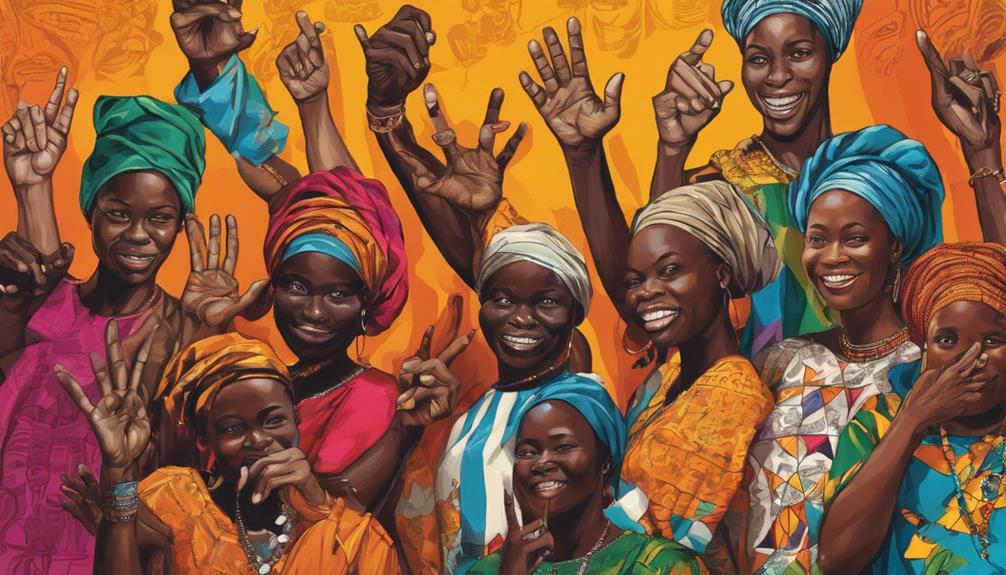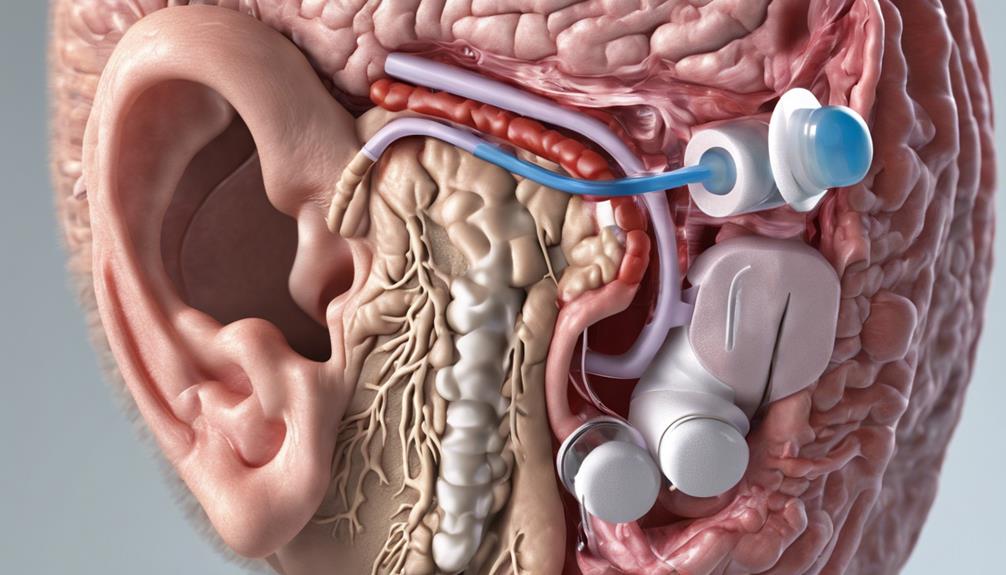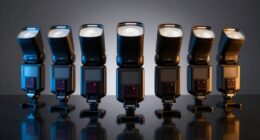Embarking on a journey through Nigeria’s vibrant Sign Language community, we uncover a diverse tapestry of traditions and advancements in technology that shape the deaf culture in this diverse nation.
From the historical roots of Nigerian Sign Language to the challenges faced by the deaf community, each aspect offers a unique glimpse into a world often overlooked.
As we peel back the layers of this rich community, we are met with stories of resilience, innovation, and cultural significance that beckon us to discover more about this thriving and dynamic aspect of Nigerian society.
Key Takeaways
- NSL's unique blend of ASL and indigenous Nigerian elements fosters a rich linguistic landscape.
- Deaf cultural traditions and storytelling are vividly expressed through NSL, reflecting Nigeria's diverse heritage.
- Advocacy efforts are essential to address challenges like limited education access and societal discrimination.
- Technological advancements, like sign language translation gloves, are enhancing NSL's reach and impact in society.
Historical Roots of Nigerian Sign Language
How did the historical roots of Nigerian Sign Language shape its development and evolution over time?
Nigerian Sign Language (NSL) traces its origins back to the early 1960s, a period marked by the gradual emergence and evolution of a distinct sign language within deaf communities across Nigeria. Influenced by American Sign Language (ASL) through the presence of American missionaries and educators, NSL began incorporating unique linguistic features while also reflecting regional variations based on local dialects and cultural nuances.
As NSL continued to grow, it integrated elements from indigenous Nigerian languages, cultural expressions, and societal norms, enriching its vocabulary and grammar. Efforts towards standardization have aimed to consolidate NSL's diverse influences into a cohesive and recognized form, highlighting its significance as a vital component of Nigeria's linguistic diversity.
The historical foundations of NSL have been instrumental in shaping its identity and fostering a sense of belonging within the Nigerian deaf community.
Sign Language Variations Across Regions
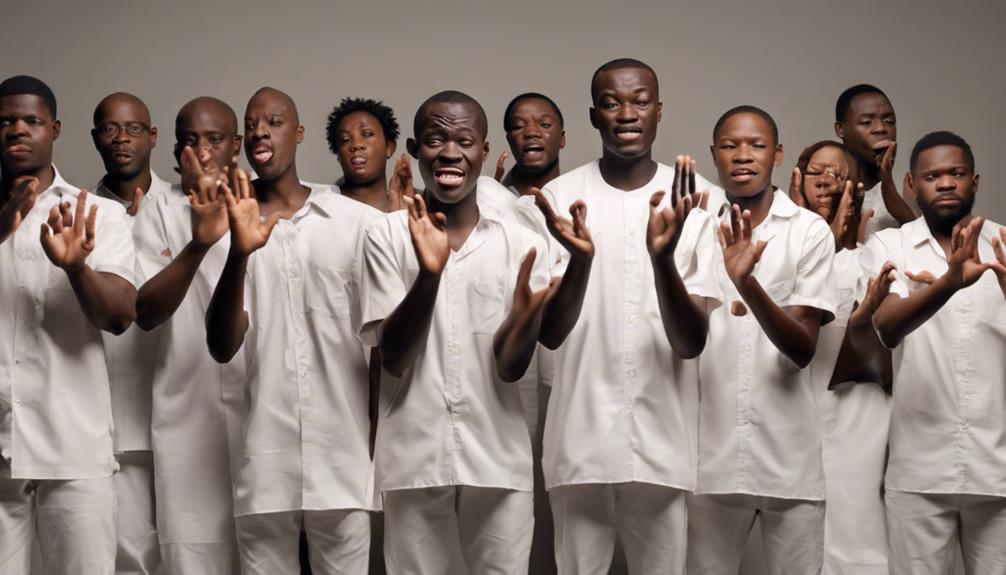
The diverse linguistic influences and cultural nuances across different regions in Nigeria give rise to distinct sign language dialects, contributing to the vibrant tapestry of communication within the country's deaf community. These sign language variations, influenced by historical, social, and geographical factors, showcase the rich linguistic diversity present in Nigeria. Different regions exhibit unique regional dialects, reflecting the specific cultural nuances and traditions of the local communities. Organizations like the Nigerian National Association of the Deaf and institutions like Wesley University play a vital role in studying and documenting these variations to promote understanding and inclusivity among deaf individuals.
Recognizing and celebrating these linguistic differences among deaf communities not only fosters unique expressions and identities but also enhances cross-cultural communication. Understanding the regional variations in Nigerian sign language is crucial for promoting inclusivity and effective communication within the diverse deaf community. By acknowledging and appreciating the richness of sign language diversity in Nigeria, we can further strengthen connections and promote unity among deaf individuals across the nation.
Cultural Traditions and Customs
Immersed in Nigeria's vibrant cultural tapestry, the sign language community intricately weaves together diverse traditions and customs, shaping a unique mode of communication reflective of the country's rich heritage.
Nigeria's sign language community mirrors the nation's varied ethnic groups, languages, and customs, illustrating a tapestry of cultural diversity. Within this community, deaf cultural norms and customs play a pivotal role in influencing communication styles and fostering interactions.
Traditional storytelling, folklore, and rituals find expression through sign language, serving as vessels that preserve and transmit Nigeria's cultural heritage from generation to generation.
Through these cultural practices, the sign language community in Nigeria cultivates a strong sense of community identity, bonding over shared customs and stories. These practices not only enrich the communication styles within the community but also serve as pillars that uphold the rich cultural heritage of Nigeria.
As a result, the sign language community stands as a testament to the enduring influence of cultural traditions on shaping modes of communication and fostering community cohesion.
Challenges Faced by the Deaf Community
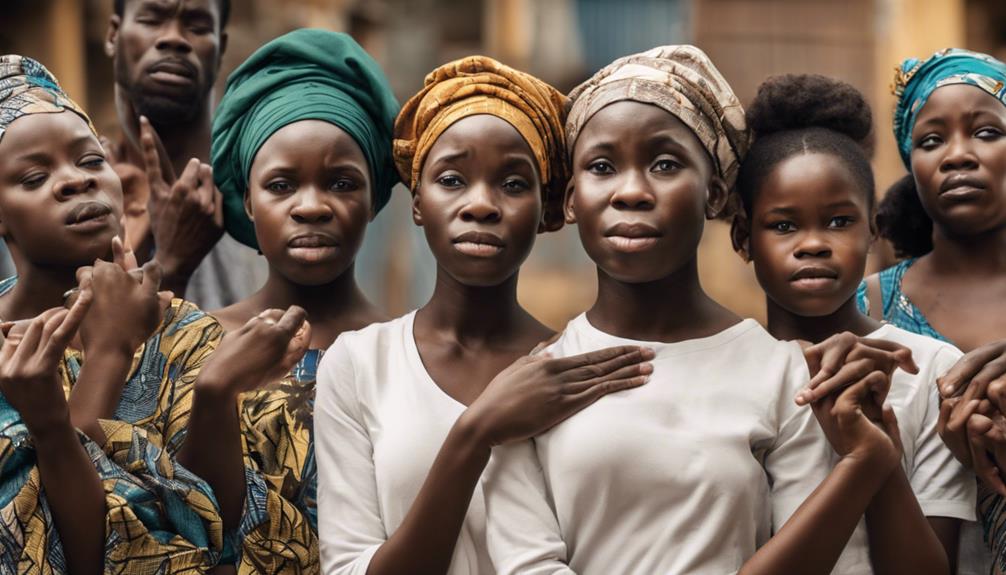
Within Nigeria's vibrant cultural tapestry, the challenges faced by the deaf community reflect systemic barriers that hinder their socio-economic development and social inclusion. Limited access to quality education and employment opportunities restricts their progress, perpetuating cycles of poverty. Communication barriers in public services and healthcare settings exacerbate the struggle for deaf individuals to access crucial support. Moreover, the persistent stigma and discrimination against the deaf community impede their social inclusion and overall well-being, reinforcing societal misconceptions.
The lack of recognition and promotion of Nigerian Sign Language as an official language further complicates matters by impeding deaf individuals from asserting their linguistic rights effectively. Consequently, advocacy efforts play a pivotal role in addressing these systemic barriers and advocating for the rights and empowerment of the deaf community in Nigeria. By recognizing and addressing these challenges, progress can be made towards fostering a more inclusive society that values and supports the diverse linguistic and cultural needs of all its members.
Sign Language Education Initiatives
Embarking on initiatives for sign language education in Nigeria is paramount for empowering the deaf community and fostering inclusive educational environments. Organizations like GAIN-Africa are actively involved in providing accessible sign language education opportunities for deaf individuals in Nigeria. These initiatives play a crucial role in bridging communication gaps and enhancing social integration within the deaf population. Training programs for sign language interpreters are instrumental in facilitating effective communication between the deaf and hearing communities.
The emphasis on sign language education initiatives reflects a commitment to promoting linguistic diversity and ensuring the inclusion of all individuals in educational settings. By investing in these programs, Nigeria is striving towards creating a more equitable society where the deaf community can fully participate and contribute. The efforts to expand sign language education initiatives not only benefit the deaf population but also enrich the overall educational landscape by fostering a more inclusive and communicative environment for all.
Innovative Technology in Sign Language Communication
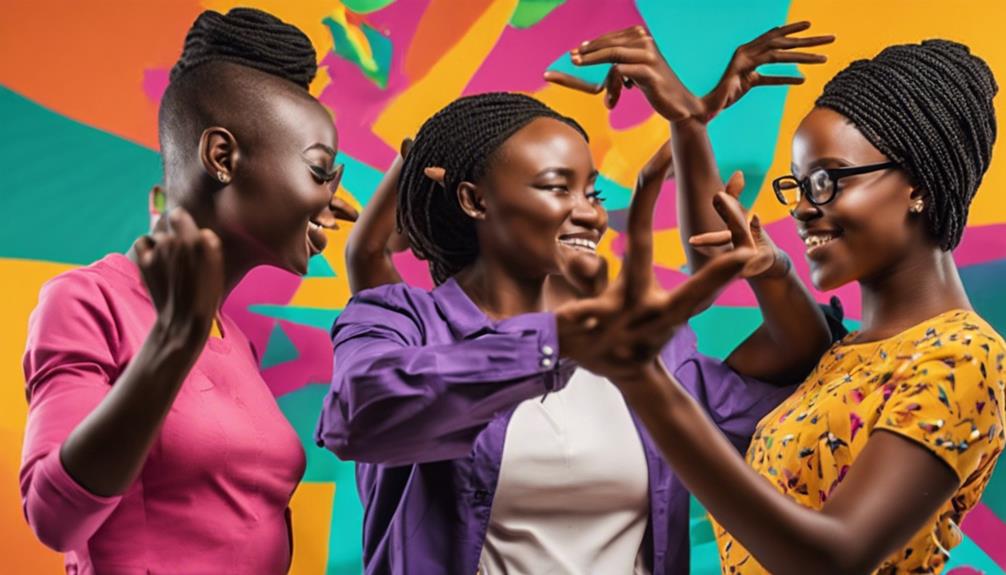
We've observed a significant shift towards tech-driven solutions in the realm of sign language communication within Nigeria's Deaf community.
From video relay services to sign language recognition software, technology is paving the way for enhanced accessibility and inclusion for Deaf individuals.
The development of gesture-based devices and mobile apps equipped with sign language dictionaries is empowering Deaf Nigerians to navigate communication barriers more effectively.
Tech Advancements in Sign Language
How have innovative technologies revolutionized communication within the sign language community? Technological advancements have significantly improved communication for the deaf community. Innovative gloves like SignAloud and EnableTalk, along with mobile apps such as GnoSys, use technology to translate sign language into speech in real-time. 3D motion capture systems like SLIM analyze and interpret sign language movements accurately. Smart glasses like SignGlasses provide on-the-go translation through augmented reality displays, enhancing accessibility. Video relay services like Sorenson Video Relay facilitate communication over video calls, bridging gaps in communication. These tech advancements not only improve translation accuracy but also empower individuals within the sign language community to communicate effectively in various contexts.
| Technology | Description | Application |
|---|---|---|
| Innovative Gloves | Use sensors to translate sign language into speech | SignAloud, EnableTalk |
| Mobile Apps | Utilize AI and machine learning for real-time sign language translation | GnoSys |
| 3D Motion Capture Systems | Capture sign language movements for analysis and interpretation | SLIM |
| Smart Glasses | Provide on-the-go sign language translation through augmented reality displays | SignGlasses |
| Video Relay Services | Enable deaf individuals to communicate via sign language over video calls | Sorenson Video Relay |
Accessibility Through Technology
Innovative technologies have significantly enhanced accessibility and inclusivity for the deaf community in Nigeria, revolutionizing communication through advancements like video relay services and smart gloves.
Sign language recognition software and devices are playing a crucial role in various sectors, while online platforms and social media are providing opportunities for deaf individuals to connect and express themselves in sign language.
Tools such as captioning services and video conferencing platforms are bridging communication gaps, facilitating seamless interactions for the deaf.
Moreover, the development of virtual reality applications is creating immersive sign language learning experiences for both deaf and hearing individuals, fostering a more inclusive environment.
These technological innovations are reshaping the landscape of communication and accessibility for the deaf community in Nigeria.
Celebrating Sign Language Diversity
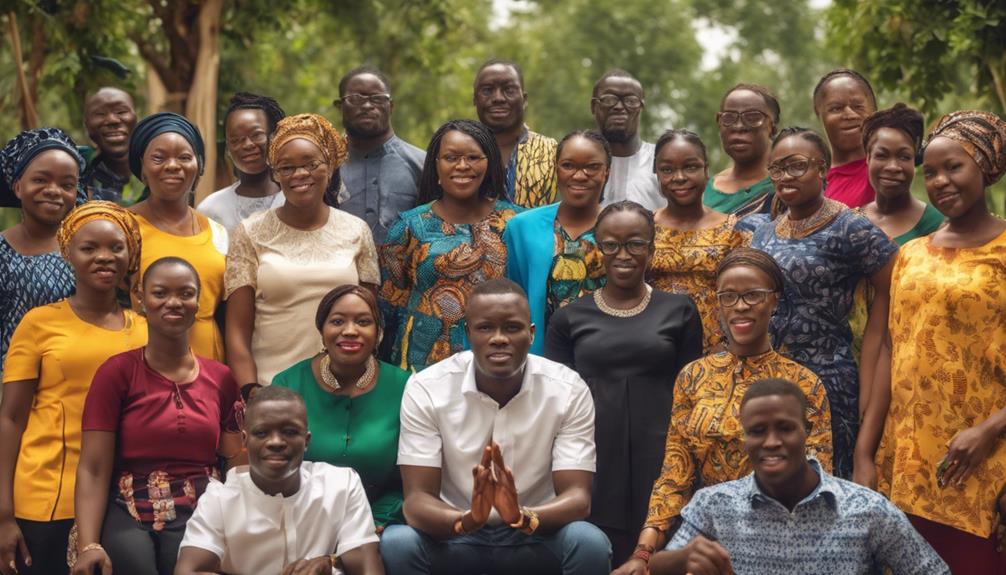
Celebrating the rich tapestry of sign language diversity in Nigeria reveals a vibrant mosaic of regional dialects and cultural expressions. The deaf community in Nigeria thrives on the linguistic diversity present within different Nigerian ethnic groups, which enriches their cultural identity and fosters inclusion. Sign language, as a primary mode of communication, plays a significant role in daily interactions, education, and social activities among deaf individuals in Nigeria.
Key Points:
- Cultural Identity: Sign language diversity in Nigeria reflects the unique cultural identities of various Nigerian ethnic groups, contributing to a rich tapestry of communication methods and expressions.
- Linguistic Diversity: The presence of multiple sign languages within Nigeria highlights the linguistic diversity present in the country, showcasing the adaptability and creativity of the deaf community.
- Community Pride: The vibrant Nigerian sign language community exhibits a strong sense of pride in their diverse communication methods, fostering a tight-knit community that celebrates its heritage and resilience.
Frequently Asked Questions
What Is the History of Sign Language in Nigeria?
Sign language in Nigeria has a rich history dating back to the establishment of schools for the deaf in the early 1960s. Nigerian Sign Language (NSL) evolved from American Sign Language (ASL), incorporating indigenous signs and cultural elements, reflecting the linguistic richness of Nigeria.
The Nigerian National Association of the Deaf (NNAD) plays a vital role in promoting NSL. Sign language interpreters undergo training to facilitate communication between deaf and hearing individuals in various settings.
Does Nigeria Use Asl?
We don't use ASL in Nigeria! Nigerian Sign Language (NSL) is our go-to! It's our main mode of communication among the Deaf community, packed with unique vocab, grammar, and culture-specific elements.
NSL has grown organically within our vibrant Deaf community, reflecting our diverse society. Understanding NSL is key for seamless integration and effective communication in Nigeria.
How Many People Are Deaf in Nigeria?
We estimate around 1.5 million Nigerians experience deafness, a significant portion of the population. Deafness affects all age groups in Nigeria, from children to older adults.
The Nigerian deaf community is diverse, vibrant, and has a rich cultural and linguistic heritage in sign language. Sign language is vital for communication and community bonding among the deaf population in Nigeria.
Efforts focus on raising awareness, education, and promoting inclusion for the deaf community.
How Many Deaf Schools Are in Nigeria?
We've approximately 30 deaf schools across various states in Nigeria, ensuring education and support for the deaf community. These schools offer specialized sign language instruction and tailored educational programs, reflecting the government's commitment to inclusive education.
The presence of multiple schools underscores efforts to empower the deaf population and promote accessibility. Nigeria's diverse deaf school network signifies a significant stride towards educational equity and empowerment for individuals with hearing impairments.
Conclusion
As we conclude our exploration of Nigeria's vibrant Sign Language community, we stand in awe of the rich tapestry of communication that has been woven by deaf individuals across the country.
Like a symphony of hands dancing in harmony, each sign tells a story of resilience, culture, and unity.
Let's continue to celebrate and support the diversity of Sign Language, ensuring that every hand gesture is heard and understood in our shared world.

